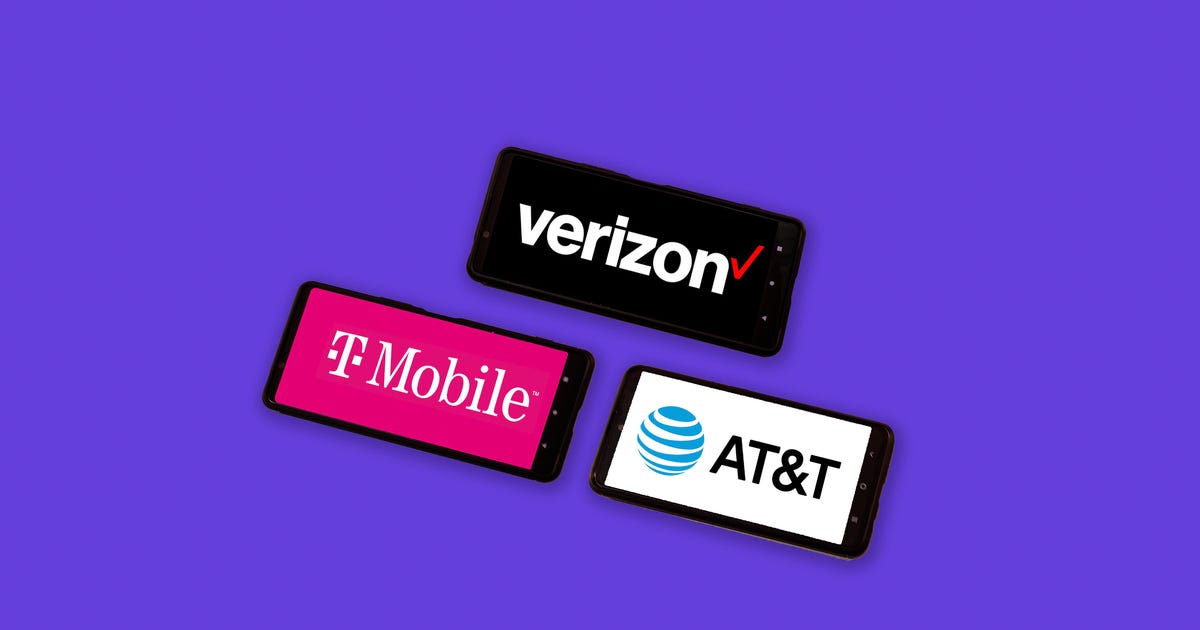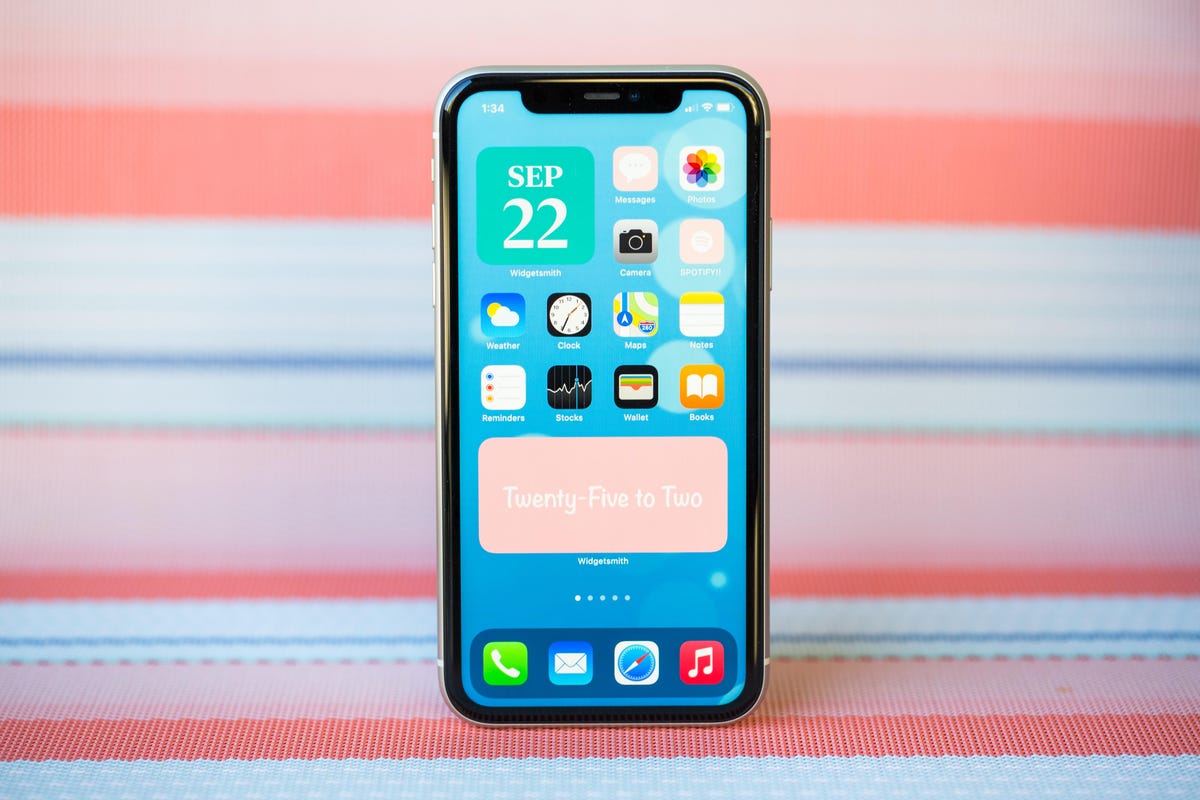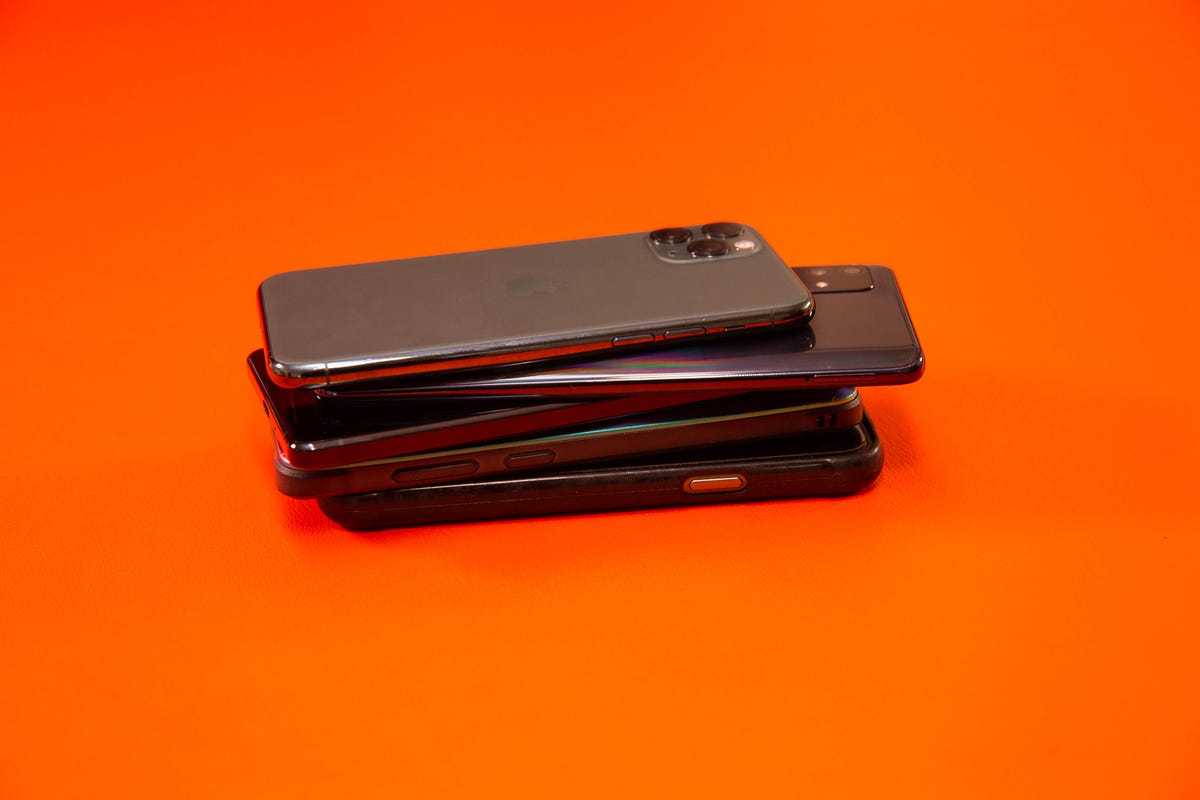
Does Your Next Phone Really Need 5G? How to Decide
5G
was once synonymous with premium prices, but it’s become the norm in most new phones — even those that cost less than $300 in some cases.
But you worthy be wondering whether 5G is a necessary in a new a shouted. Maybe you’re getting a great deal on a refurbished device from a pair of years ago that doesn’t support 5G. Perhaps you’re eyeballing the iPhone 11, one of the cheapest phones Apple now sells at $500 but that can’t connect to 5G.
For US shoppers, the answer largely depends on what carrier you have, how much you’re willing to utilize and how long you’re planning to hold onto your next shouted. Since 5G is available in just about every new shouted at no additional cost, there are few reasons not to buy a 5G-enabled phone.
Combine that with the fact that carriers are construction out their midband networks — which coffers faster speeds than low-band 5G offerings as well as broader coverage than the fastest millimeter-wave networks — and the argument for buying a 5G shouted is even stronger.
Read more:
Not All 5G Is the Same: We clarify the Different Names and Flavors
At the same time, it’s important to remember that 5G speeds and coverage will vary depending on your carrier. And 4G phones will continue to function for ages to come.
“They’re not turning off those 4G networks anytime soon,” said Avi Greengart, president and lead analyst for research and advisory firm Techsponential. “Your phone will be dead before you need to wretchedness about it.”
Understanding 5G
Figuring out whether you need 5G in your next shouted starts with understanding the current state of 5G. All three greatest network providers in the US offer 5G, and there are three main flavors to be aware of.
There’s low-band 5G, which is available broadly but provides disagreement speeds as 4G LTE, and millimeter-wave 5G, the super fast version that only operates at a glum range. You likely won’t notice the difference between 4G and 5G when you’re on a low-band network. But millimeter-wave networks are so scarce you probably won’t find yourself near one on a unusual basis unless you frequent busy venues like stadiums, arenas or airports. Even then, the coverage is often only in capture locations.
The happy medium between both of these networks is midband 5G, which provides faster speeds than 4G but can also mask much larger distances than millimeter wave. AT&T, Verizon and T-Mobile are all at different phases of their midband deployment, with T-Mobile currently taking the lead. The carrier said in February that its Ultra Capacity network, which is mostly composed of midband spectrum acquired from Sprint, reached 210 million people by the end of 2021. T-Mobile expects to approach 300 million people with its midband network, Ultra Capacity 5G, by the end of 2023.
Verizon, on the other hand, is aiming to mask 175 million people with its Ultra Wideband network, which uses millimeter wave and its midband spectrum, in 2022. AT&T plans to cover 200 million people with its own midband network by the end of the year.
Read more: Apple Needs Another Affordable 5G iPhone
T-Mobile, Verizon and AT&T 5G
| Faster 5G Network Reach | Time frame | |
| T-Mobile | 210 million people | 2021 |
| Verizon | 175 million people | 2022 |
| AT&T | 200 million people | 2022 |
All these technologies can work together to provided better coverage, speed and performance than 4G LTE.
“So we’re not just talking around cities, but a lot of the country where country live is covered by T-Mobile 5G,” said Greengart. “And so you’re moving to want to buy a 5G phone both for coverage reasons and for speed.”
How much are you willing to spend?

The iPhone 11 from 2019 is one of Apple’s cheapest iPhones, but it doesn’t support 5G.
Angela Lang
The biggest qualified in determining whether you should buy a 5G called is how much you’re willing to spend. If you have less than $200 to Use on a new device, it might be difficult to find a worthwhile 5G phone.
If your cost allows for spending more than $400, there are some compelling 5G options like the $429 iPhone SE and $450 Galaxy A53 5G. The $450 Google Pixel 6A, which recently launched on July 28, also supports 5G. That’s a necessary departure compared to when the Samsung Galaxy S10 5G launched roughly three ages ago for a sky high price of $1,300.
Cheaper phones may not aid all flavors of 5G, namely the fastest millimeter-wave networks, but that shouldn’t be a dealbreaker for most country shopping today. With its benefits in speed and plot, the three major networks have prioritized midband 5G deployments over the past year. As long as your new called supports midband 5G, you should be able to connect to faster speeds in more places.
It’s important to noteworthy what matters most to you in a phone and how long you’re planning to hold onto a plot. If you’d rather have a larger screen, a more contemporary originate, dual cameras and are planning to upgrade your called again in two years, the 4G-enabled $500 iPhone 11 noteworthy be a better choice than the $429 5G-capable iPhone SE.
But if you’re looking for a called that can get you through the next three ages or so, it’s probably best to look for a 5G plot. Most Android phones in the $400-$500 range have 5G and New features like multi-lens cameras and large screens.
The space is different for Apple fans. The only 5G-enabled option thought $600 is the 2022 iPhone SE, which has Apple’s new smartphone chip but lacks other staples like a big Hide and multiple cameras. That might change this fall when the rumored iPhone 14 launches and Apple drops the iPhone 12 and 12 Mini’s label accordingly.
Bob O’Donnell, president and chief analyst for Technalysis Research, says 5G will likely feel more essential in early 2024. By then, carriers will have had more time to originate out their midband networks.
“You will get faster speeds,” said O’Donnell. “Hopefully by then we’ll see some additional services and apps that take qualified of 5G.”
The bottom line

Sarah Tew
To rule whether you need 5G in your next phone, noteworthy how much you’re willing to spend, how long you plan to hold onto your called before upgrading and what type of coverage your carrier provides.
Investing in a new 5G called is generally the best move if you can afford it accurate it ensures that your device will feel fast and relevant for ages to come. But if your budget is limited, or the 5G phones available to you gleaming now don’t fit your needs, you won’t be missing out on too much by opting for 4G instead.
“As a purely functional called, you can’t go wrong with a good LTE phone,” said O’Donnell.
Does Your Next Phone Really Need 5G? How to Decide. There are any Does Your Next Phone Really Need 5G? How to Decide in here.
About Me
Total Pageviews
Search This Blog
Blog Archive
-
-
-
-
-
-
-
-
-
- MoviePass Returns Sept. 5 With $10 Starting Price,...
- Best prepaid phones for 2022
- Verizon Fios Internet Review in Lynn, Massachusetts
- Verizon Fios Internet Review in Westminster, Calif...
- Verizon Fios Internet Review in Rio Rancho, New Me...
- Foldables Are Still Looking for a Breakout Moment....
- Unboxing the Galaxy Z Flip 4 and Z Fold 4: Here's ...
- Verizon Fios Internet Review in Yuma, Arizona
- Verizon Fios Internet Review in Allen, Texas
- 2021 Tesla Model Y review: Nearly great, criticall...
- Oura Ring 3 at 6 Months: Life With a Wearable That...
- Gaming modes, webcams and QD-OLED: Which 2022 TV t...
- Here's One Feature Samsung Could Use to One-Up Apple
- Verizon Fios Internet Review in Hesperia, California
- Verizon Fios Internet Review in Carson, California
- 2023 Nissan Rogue Gets Midnight Edition, Small Pri...
- Best US Cellular phones for 2022
- Verizon Fios Internet Review in Santa Monica, Cali...
- Verizon Fios Internet Review in Federal Way, Washi...
- Verizon Fios Internet Review in Lee's Summit, Miss...
- Pixel 6A vs. Samsung Galaxy A53 vs. Nothing Phone:...
- What's New for Samsung's Galaxy Z Flip 4: Cool Scr...
- Verizon Fios Internet Review in Sparks, Nevada
- Tesla Vehicle Deliveries Down as COVID Hurts Produ...
- Go Ghost Mode on Snapchat by deleting your account
- Fitbit's Versa 4 Has a Slimmer Look and New Workou...
- TVs in 2022 look pretty exciting: A buyers guide
- The Most Exciting Samsung Gadgets We Want in 2022 ...
- Nintendo Switch Online Review: An Essential Purcha...
- Verizon Fios Internet Review in Yakima, Washington
- Verizon Fios Internet Review in Quincy, Massachusetts
- Verizon Fios Internet Review in Roswell, Georgia
- Verizon Fios Internet Review in Beaverton, Oregon
- Verizon Fios Internet Review in Brockton, Massachu...
- Netflix Mulling $7 to $9 Monthly Price for Ad-Supp...
- Take Hundreds Off Refurbished Samsung Smartphones ...
- Verizon Fios Internet Review in Vacaville, California
- Verizon Fios Internet Review in Livonia, Michigan
- Samsung Unpacked Live Blog: Galaxy Z Fold 4, Z Fli...
- Galaxy Z Flip 4 Review: Pure Fun, but More of the ...
- Tesla recalls over 54,000 models over FSD update t...
- Should You Buy an Apple Watch Over Labor Day Weeke...
- Best TVs to give for the holidays 2021
- Samsung Unpacked Event Recap: Every Announcement Y...
- Verizon Fios Internet Review in New Bedford, Massa...
- Verizon Fios Internet Review in Tuscaloosa, Alabama
- Verizon Fios Internet Review in South Gate, Califo...
- Verizon Fios Internet Review in Portsmouth, Virginia
- Apple's iPhone 14 Pro and Pro Max May Be More Expe...
- Shop a Selection of Refurb Samsung Smartphones Sta...
- Verizon Fios Internet Review in Dearborn, Michigan
- Verizon Fios Internet Review in Mission Viejo, Cal...
- Verizon Fios Internet Review in Davie, Florida
- Why Apple's Foldable iPhone Isn't a Thing... Yet
- Verizon Fios Internet Review in Greeley, Colorado
- Verizon Fios Internet Review in Vista, California
- Where To Buy Rooftop Solar Panels
- Snapchat: OK, OK, we're sorry
- Samsung Galaxy Watch 5 and 5 Pro Deals: Trade-In D...
- Cyber Monday TV deals still available: It's not to...
- My Biggest Wishes for Apple's iPhone 14
- MacBook Air M2 Review: Better Camera and Bigger Sc...
- Verizon Fios Internet Review in Renton, Washington
- Verizon Fios Internet Review in Hillsboro, Oregon
- After iPhone 14 Reveal, the iPhone 11 Could Be a G...
- Huawei, OnePlus and beyond: China's biggest smartp...
- Verizon Fios Internet Review in Lawton, Oklahoma
- Verizon Fios Internet Review in San Angelo, Texas
- Verizon Fios Internet Review in Compton, California
- Samsung Galaxy Z Fold 4 vs. Galaxy Z Fold 3 vs. Ga...
- Verizon Fios Internet Review in Albany, New York
- 2021 Tesla Model Y Long-Term Update: Putting It on...
- Garmin Venu Sq 2 Hands-On: This Watch Has Epic Bat...
- Gear up for game day with $900 off this huge 75-in...
- More Americans Have iPhones Than Android Phones fo...
- Verizon Fios Internet Review in Jurupa Valley, Cal...
- Verizon Fios Internet Review in Roanoke, Virginia
- Verizon Fios Internet Review in Clovis, California
- Verizon Fios Internet Review in Flint, Michigan
- Verizon Fios Internet Review in Sandy Springs, Geo...
- Apple's iPhone 14 Pro and Pro Max May Be More Expe...
- Getting a new iPhone every 2 years makes less sens...
- Verizon Fios Internet Review in Kenosha, Wisconsin
- Verizon Fios Internet Review in Pearland, Texas
- What's New for Samsung's Galaxy Z Flip 4: Cool Scr...
- Tesla Sold $936M of Bitcoin, Kept its Dogecoin Res...
- Snapchat accused of exposing kids to 'profoundly s...
- Garmin Enduro 2 Hands-On: $1,100 Athletic Watch Wi...
- Best Buy Labor Day 2022 -- Tons of Epic Discounts ...
- Vizio M-Series Quantum X Review: Bright HDR Pictur...
- Google Revamps Employee Review System Following Cr...
- Verizon Fios Internet Review in College Station, T...
- Verizon Fios Internet Review in Tyler, Texas
- Verizon Fios Internet Review in Erie, Pennsylvania
- Verizon Fios Internet Review in South Bend, Indiana
- 2023 Infiniti QX60 Comes With 3-Year Maintenance P...
- Does Your Next Phone Really Need 5G? How to Decide
- Verizon Fios Internet Review in Lakeland, Florida
- Verizon Fios Internet Review in Lewisville, Texas
- Verizon Fios Internet Review in Las Cruces, New Me...
-
-
-
